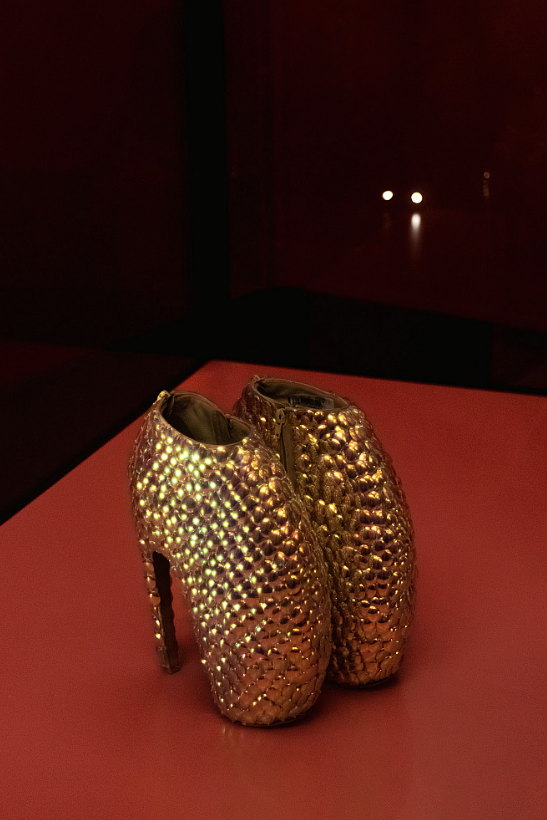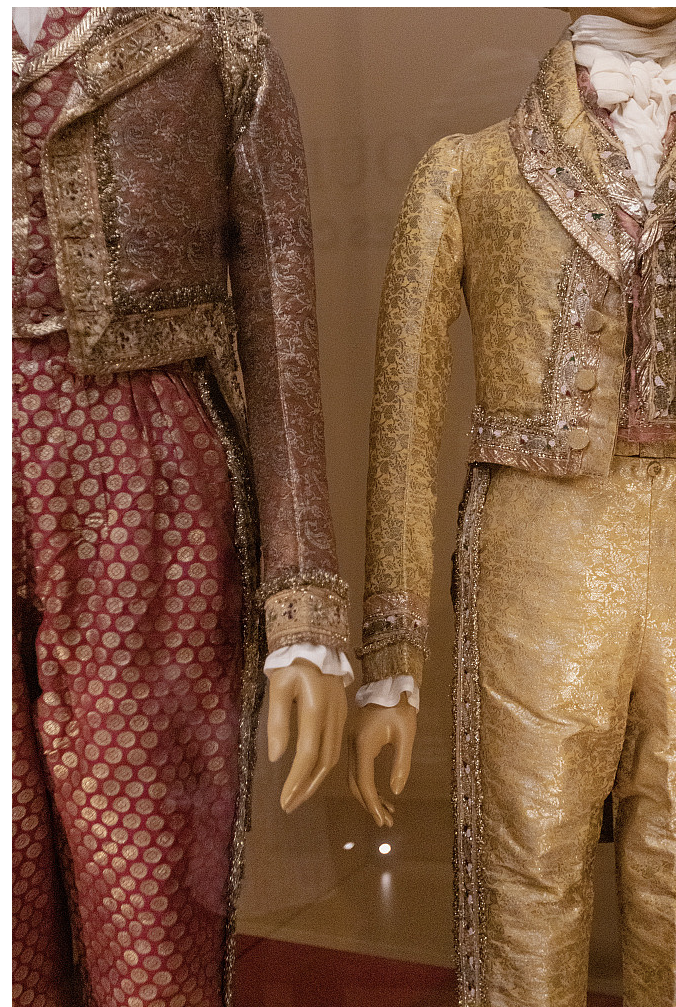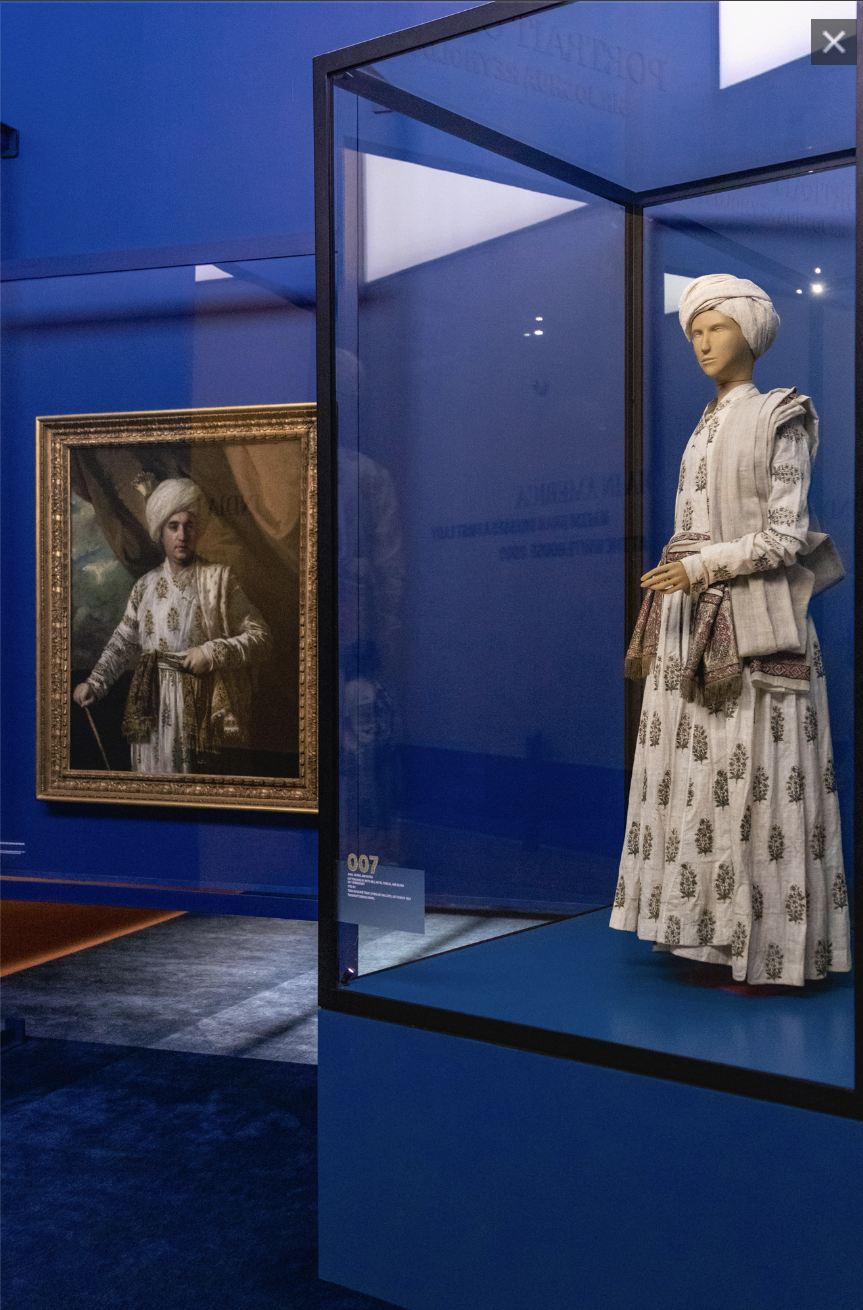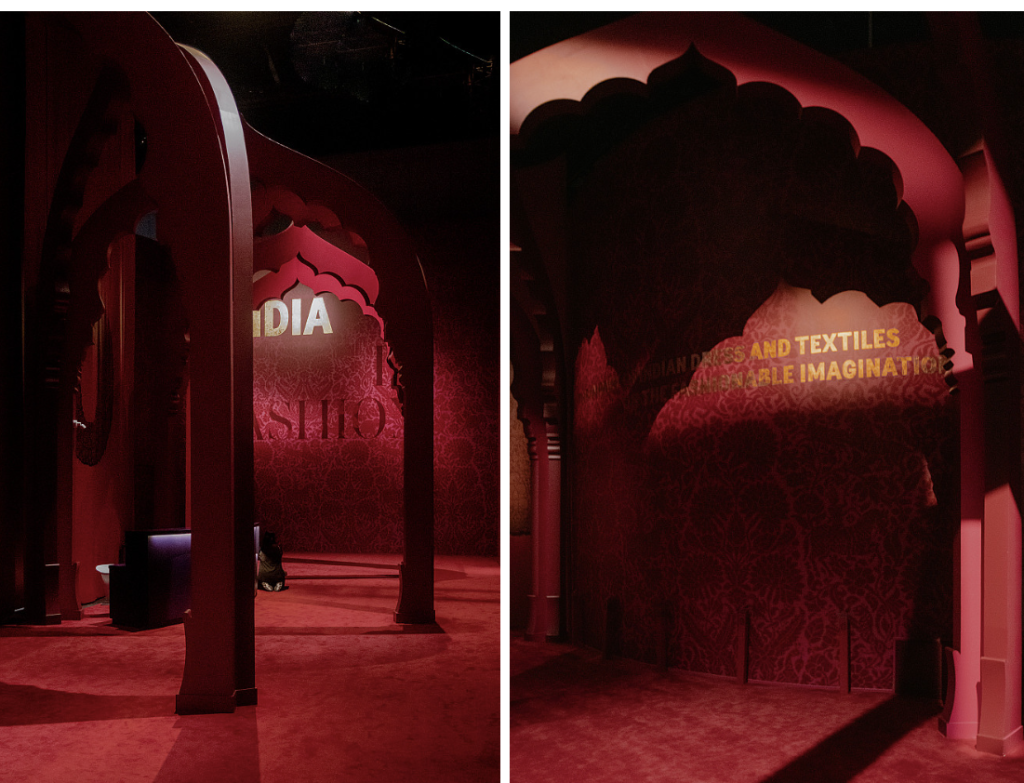The recently-concluded exhibition “India in Fashion: The Impact of Indian Dress and Textiles on the Fashionable Imagination” occurred at the Nita Mukesh Ambani Cultural Centre (NMACC) in Mumbai, India. Curated by fashion journalist and editor Hamish Bowles, the exhibition explored India’s influence on European fashion throughout history. The exhibition was divided into ten sections, each focusing on different aspects of India’s impact on global design.
Patrick Kinmonth, a designer of sets for opera, and Mumbai-based architect Rooshad Shroff, meticulously designed the exhibition space. Each exhibition section had unique scenography, drawing inspiration from specific periods or architectural styles. The displays were set against a backdrop of Indian motifs, stylised arches, and a sindoor-red lobby embellished with a scanned brocade weave depicting a royal hunt.
One of the notable garments featured in the exhibition was the Jellyfish outfit from Alexander McQueen’s final collection, Plato’s Atlantis. Although the outfit seemed unrelated to India at first glance, it was connected through the caption of a framed picture of a blue-green beetle on the wall behind it. The caption pointed out that the Deccan beetle wing embroidery, a traditional Indian embroidery technique, inspired the textile used by McQueen. This highlighted India’s influence on global fashion, even in unexpected ways.

The exhibition also showcased other garments demonstrating India’s influence on Western fashion. This included court suits from the 1830s embellished with zardozi embroidery, a dhoti-inspired jumpsuit by Federico Forquet, and a silk lamé organza drape dress from Dior’s 1956 collection, paired with a Tarun Tahiliani creation in crinkle tulle from 2020, both drawing inspiration from the drapes of a saree.

The exhibition further explored the early colonial imagination of India through sections dedicated to chintz kalamkaris and Bengali muslins, which were popular fabrics in the 18th century. It highlighted the history of these fabrics, their impact on society, and the subsequent commercial exploitation and ban on their import from India. The exhibition also featured garments from French couture houses such as Chanel, Christian Dior, and Yves Saint Laurent, showcasing their interpretation of India’s allure.

The exhibition paid homage to the iconic Indian saree garment in a dedicated section. It featured sari-inspired dresses by Mainbocher, Givenchy, Cristóbal Balenciaga, and Madame Grès, as well as an actual saree commissioned by Christian Dior in 1953. The exhibition concluded with a showcase of current Indian designers, representing the arrival of Indian fashion on the global stage.
The exhibition was a significant milestone in documenting and celebrating India’s influence on fashion throughout history. It featured loaned collections from various institutions and archives worldwide, making it possible for these garments to be seen in India without needing to travel to museums abroad. The exhibition not only showcased the beauty and craftsmanship of Indian textiles but also shed light on the complex history of admiration, appropriation, exploitation, and celebration of Indian dress and textiles in Western fashion.
Feature image: left: The entrance to the exhibition featured multiple red arches. Right: The sindoor-red walls of the opening lobby were covered with a scanned brocade weave. Courtesy: Verve
To read more about Nita Mukesh Ambani Cultural Centre (NMACC), Click here

Contributor






